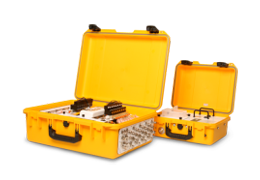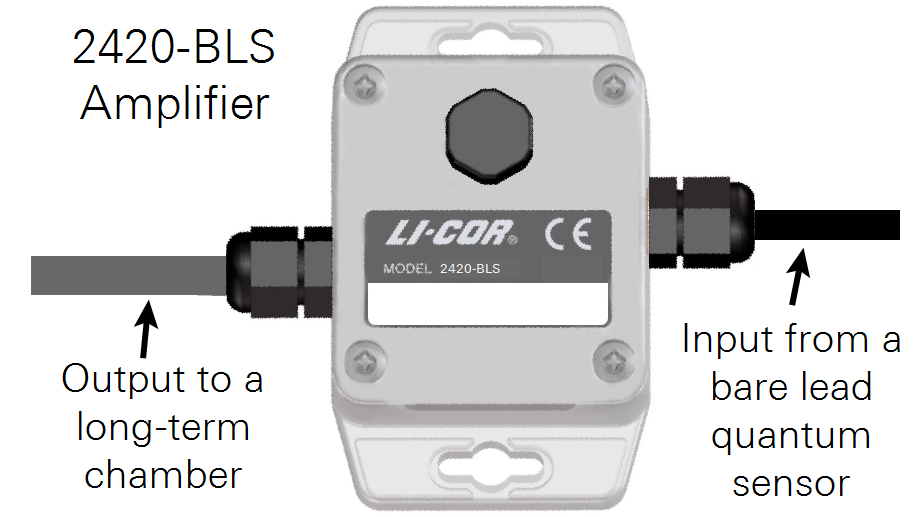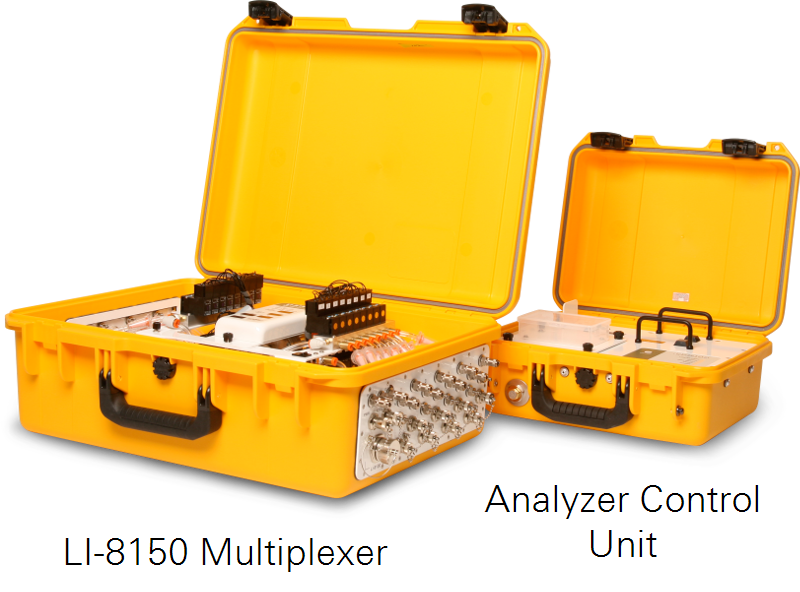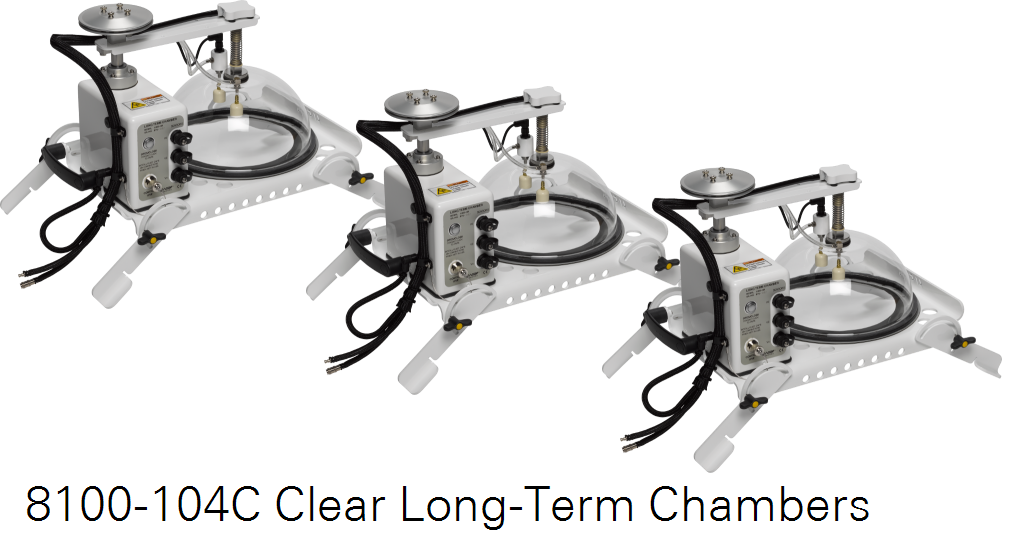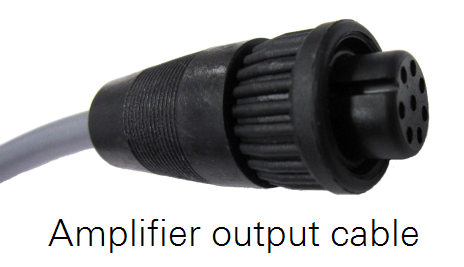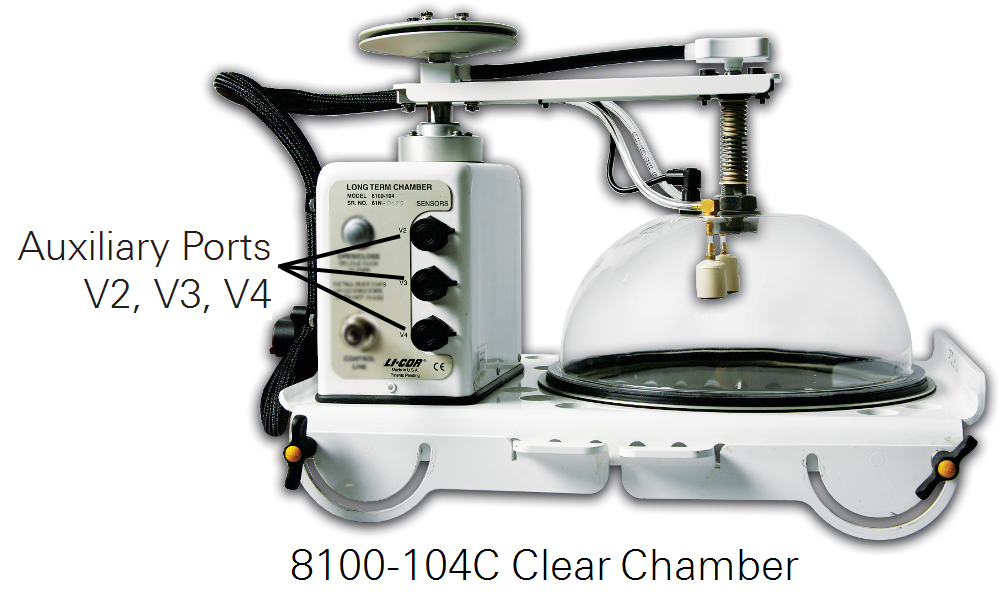Download this content as a pdf that can be saved to your computer or printed.
Light measurements are most commonly done in conjunction with the clear version of the long-term chamber (8100-104C Clear Long-Term Chamber), but can also be done in conjunction with the opaque version (8100-104 Long-Term Chamber).
In order to measure and log photosynthetically active radiation (PAR), connect the 2420-BLS amplifier to one of the auxiliary sensor ports on a long-term chamber and connect a quantum sensor to the amplifier.
Important Note: The 2420-BLS amplifier is compatible only with 8100-104/C long-term chambers operating in multiplex mode (connected to the LI-8150 multiplexer). If a single chamber is connected directly to the Analyzer Control Unit, use the 2420-BL Light Sensor Amplifier and connect it to the Auxiliary Sensor Interface on the side of the Analyzer Control Unit.
Caution: The 2420-BLS Amplifier is weather resistant with the lid properly attached, but if it is to be left outdoors and unattended for long periods of time, it should be installed in a protective enclosure or sheltered location.
Measurement Overview
2420-BLS Amplifier Gain Settings
The amplifier provides 15 discrete gain settings to accommodate a variety of full-scale light intensities and full-scale voltage ranges. This section shows how to determine the correct gain setting for your application. Gather the following information:
- Calibration constant for your light sensor (C)
- Maximum full-scale light intensity to be measured (Imax)
- Full-scale input voltage of the datalogger (Vmax = 5.0 V for the LI-8100A Automated Soil CO2 Flux System)
Follow these steps:
- Calculate the ideal amplifier gain (Gideal).
-
- Example: Consider a quantum sensor installation with the following parameters:
-
- Sensor calibration constant: C = 6.5 μA per 1000 μmol m–2 s–1
- Full-scale light intensity: Imax = 2000 μmol m–2 s–1
- LI-8100A full-scale channel voltage: Vmax = 5.0 V
-
- Select the gain setting (G) from the Gain Settings Table (page 2) that is less than or equal to the ideal gain from step 1.
- Example: The ideal gain computed in step 1 is Gideal = 0.3846 V μA–1. On the table, the closest actual gain that is less than or equal to this value is G = 0.375 V μA–1.
- Use a number 2 Phillips screwdriver to remove the amplifier lid. Alternate the four screws, pulling the lid up as you go so that the screws do not bind with the lid.
- Using a small screwdriver, set the switches in the center of the circuit board. Use the switch settings from the gain settings table that correspond to the amplifier gain determined in step 2.
- Example: The gain determined in step 2 (G = 0.375 V μA–1) requires all switches to be in the off position:

|
G = 0.375; all switches off | 
|
- Re-install the lid. Torque the screws to 0.45 Nm (64 oz-in.) if using a torque screwdriver.
- Calculate the voltage multiplier (M). The voltage multiplier is used to convert the voltage measured by the datalogger into a light intensity. For Quantum sensors, the units for M are μmol m–2 s–1 V–1.
-
- Example: Calculate M using G = 0.375 V μA–1 from step 2 and C = 6.5 μA per 1000 μmol m–2 s–1 from step 1:
-
Connecting a Quantum Sensor
Important Note: The 2420-BLS amplifier requires a current (μA) signal from the sensor. It will not work with a millivolt adapter or with a sensor that produces a voltage signal output.
A LI-COR bare lead type quantum sensors connects to the 2420-BLS Light Sensor Amplifier using these steps:
- Use a number 2 Phillips screwdriver to remove the amplifier lid. Alternate the four screws, moving the lid up with the screws so that the screws do not bind with the lid.
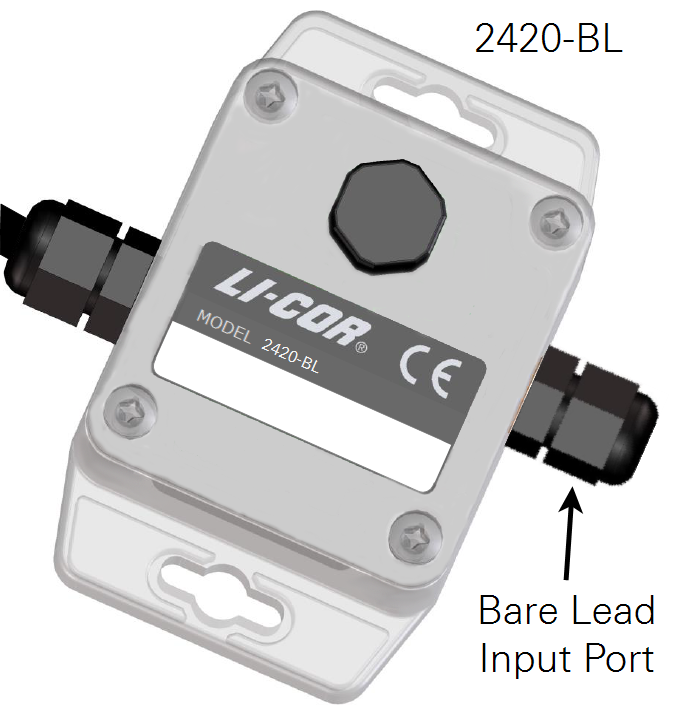
- Loosen (but do not remove) the black plastic nut on the input port.
- Feed the sensor cable through the nut and input port far enough that the black shielded portion extends inside the amplifier, then hand tighten the nut.
- Press down the connector’s spring release and insert the sensor wires into the terminal block as shown below.
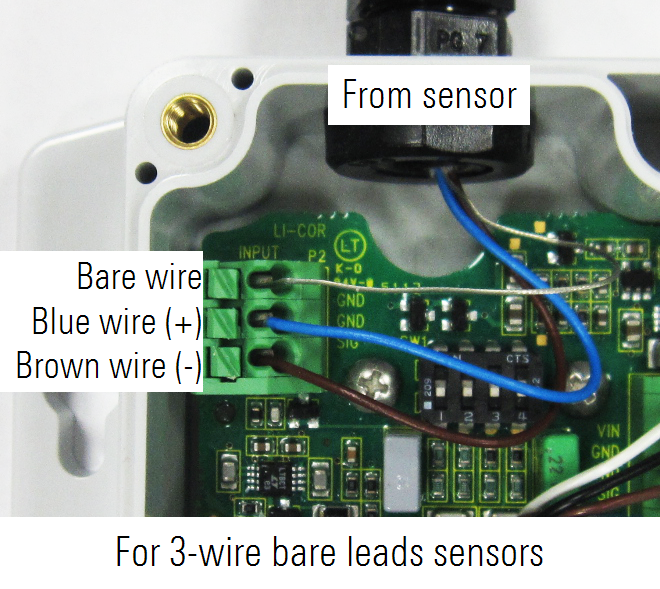
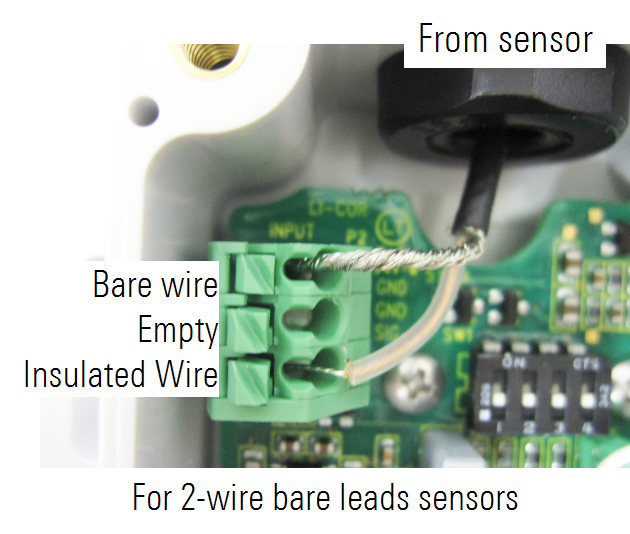
- Re-install the lid. Torque the screws to 0.45 Nm (64 oz-in.) if using a torque screwdriver.
Connecting an Amplifier to a Chamber
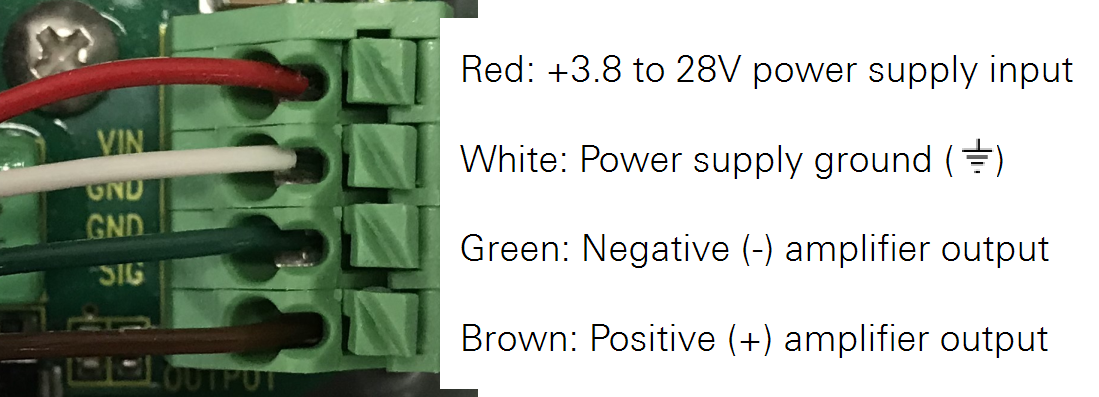
The 2420-BLS amplifier comes pre-wired (see Figure 1‑1) with an output cable. Plug this cable into one of the auxiliary sensor ports on the side of the long-term chamber (see below).
Software Configuration
In the Multiplex Configuration window of the LI-8100A application software, follow these steps:
- Click on Port Setup and choose the V2, V3, or V4 tab, depending on which auxiliary port is being used.
- Select General Purpose Input.
- Enter slope and offset values:
-
- Slope = M (calculated previously)
- Offset = 0.00
- If you are using only one quantum sensor, select Fix to port and enter the port number of the chamber that has the sensor attached.
- Click on Apply to Port.
Equation Summary
Output Voltage
The 2420-BLS Light Sensor Amplifier output voltage is calculated based on the equation:
| Variable | Units | Description |
|---|---|---|
| Vout | V | Amplifier output voltage |
| G | V μA–1 | Amplifier gain setting |
| i | μA | Light sensor photocurrent signal |
Ideal Gain
The ideal gain (Gideal ) is the gain needed by the 2420-BLS Amplifier to scale the full-scale light sensor output to the full-scale input voltage of the data logger. The 2420 Amplifier uses 15 discrete gain settings, so the ideal gain must be rounded down to the nearest supported gain of the 2420 Amplifier. See the gain settings table on page 2 for available gain settings. Ideal gain is computed with:
| Variable | Units | Description |
|---|---|---|
| Gideal | V μA–1 | Ideal amplifier gain |
| Vmax | V | Datalogger full-scale input voltage |
| Imax | μmol m–2 s–1 | Quantum sensor full-scale light |
| C | μA per 1000 μmol m–2 s–1 | Quantum sensor calibration constant |
Voltage Multiplier
The voltage multiplier M converts the voltage measured by the data logger into a light intensity. The multiplier is found by:
| Variable | Units | Description |
|---|---|---|
| M | μmol m-2 s-1 V–1 | Quantum sensor voltage multiplier |
| G | V μA–1 | Amplifier gain setting |
| C | μA per 1000 μmol m–2 s–1 | Quantum sensor calibration constant |
